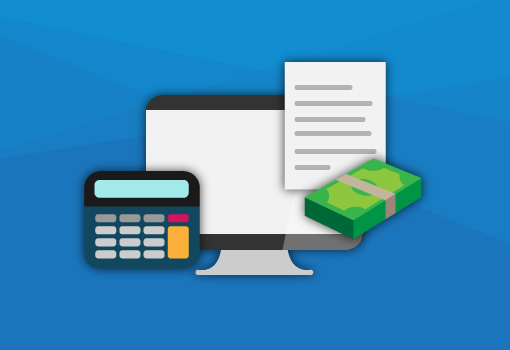Picking up a new retail client can be such an exciting time. But some of their requirements can seem daunting when you’re facing them for the first time. One of the things retailers often ask is for their suppliers to trade with them via electronic data interchange, or EDI.
What is EDI?
EDI is the electronic exchange of business information, like purchase orders and invoices. This information goes straight in and out of the retailer’s software. It’s of benefit to the retailer because it’s more efficient than paper or PDFs, it gives them real-time visibility of their purchases and products, and it reduces costs. You can find out more about EDI in this
whitepaper.
For suppliers, it’s important to be aware of your options when it comes to EDI and to choose the best option for your business.
What are my options?
EDI webforms
The simplest solution for compliance is EDI webforms. This allows you to logon to a web portal to view purchase orders and respond by sending back the required information such as purchase order responses, advance shipping notices and invoices. The information input into the web portal is sent directly to your customers’ software.
EDI webforms has a number of benefits:
- No establishment costs
- It’s easy to set up
- It has an easy-to-use interface
- You can trade with many retailers from the one portal
- It’s accessible anywhere with internet
- It’s cost effective.
- No support cost.
EDI gateway
A more automated option is an EDI gateway. The fully integrated solution exchanges information with your customers directly to and from your ERP or accounting software. This option has the least impact on your current process and requires minimal manual processing because it takes the data from your software to send EDI documents to your customers.
To gain even more benefits from your EDI gateway, it can be used to update other systems in your business. For example, when an order is despatched to one of your customers, it can automatically update inventory levels in your warehouse management system. This information can even be sent via EDI to your partners to keep them up-to-date with your inventory levels.
Some of the benefits of using an integrated solution include:
- using your existing software
- no need for data re-entry
- automating your manual processes
- improving data accuracy
- faster order processing.
Which option is right for my business?
It is important to choose an option that:
- sets your business up for future adaptability
- reduces the costs imposed on your business provides the most value.
There are a number of factors that you need to look at when deciding what EDI option is best for you, including:
- The amount of orders you receive, the number of products you sell and the amount of information that is required from your customers
As these factors increase, so does the amount of manual inputting you will be required to input into each form
- The functionality of the software you currently use in your business
For example, if you retailers require an advanced shipping notice with SSCC labels. Can your software produce these?
- Your strategic goals
For example, if you want to integrate with other systems or automate other business processes.
Use this table as a rough guide when deciding on an option for your business.[vc_column_inner width="1/2" css=".vc_custom_1565317545162{padding-top: 0px !important;background-color: #00b7f1 !important;}"]
Consider EDI webforms if…
[vc_column_inner width="1/2" css=".vc_custom_1565315132956{padding-top: 0px !important;padding-bottom: 0px !important;background-color: #1b75bb !important;}"]
Consider an EDI gateway if…
[vc_column_inner width="1/2" css=".vc_custom_1565317604253{padding-top: 0px !important;background-color: #eeeeee !important;}"]
You trade with a small number of retailers
[vc_column_inner width="1/2" css=".vc_custom_1565317619229{padding-top: 0px !important;padding-bottom: 0px !important;background-color: #eeeeee !important;}"]
You trade with a large number of retailers
[vc_column_inner width="1/2" css=".vc_custom_1565317604253{padding-top: 0px !important;background-color: #eeeeee !important;}"]
You receive roughly 30 or less orders a week
[vc_column_inner width="1/2" css=".vc_custom_1565317619229{padding-top: 0px !important;padding-bottom: 0px !important;background-color: #eeeeee !important;}"]
You receive more than roughly 30 orders a week
[vc_column_inner width="1/2" css=".vc_custom_1565317604253{padding-top: 0px !important;background-color: #eeeeee !important;}"]
You sell a limited range of products
[vc_column_inner width="1/2" css=".vc_custom_1565317619229{padding-top: 0px !important;padding-bottom: 0px !important;background-color: #eeeeee !important;}"]
You sell a large range of products
[vc_column_inner width="1/2" css=".vc_custom_1565317604253{padding-top: 0px !important;background-color: #eeeeee !important;}"]
Your customers don’t require too much data
[vc_column_inner width="1/2" css=".vc_custom_1565317619229{padding-top: 0px !important;padding-bottom: 0px !important;background-color: #eeeeee !important;}"]
Your customers require a substantial amount of information
[vc_column_inner width="1/2" css=".vc_custom_1565317604253{padding-top: 0px !important;background-color: #eeeeee !important;}"]
Your software can’t generate the information required by your customers
[vc_column_inner width="1/2" css=".vc_custom_1565317619229{padding-top: 0px !important;padding-bottom: 0px !important;background-color: #eeeeee !important;}"]
You want automated processes
[vc_column_inner width="1/2" css=".vc_custom_1565317604253{padding-top: 0px !important;background-color: #eeeeee !important;}"]
You’re just starting out with EDI
[vc_column_inner width="1/2" css=".vc_custom_1565317619229{padding-top: 0px !important;padding-bottom: 0px !important;background-color: #eeeeee !important;}"]
You don’t want to double-enter data
[vc_column_inner width="1/2" css=".vc_custom_1565317604253{padding-top: 0px !important;background-color: #eeeeee !important;}"][vc_column_inner width="1/2" css=".vc_custom_1565317619229{padding-top: 0px !important;padding-bottom: 0px !important;background-color: #eeeeee !important;}"]
You need a flexible solution that grows as your business does
Interested in implementing EDI for your business?
Get a free consultation from one of our EDI experts.











